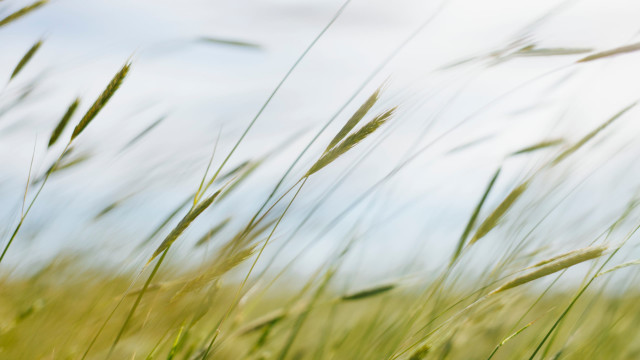Why You Should Meditate in Nature

Imagine you’re lying in a hammock, gently swaying on a bamboo veranda that overlooks a lush mangrove forest. Beyond the shades of green, you hear the rhythmic crashing of waves along a white-sand beach. The air smells like brine, but it doesn’t stick to your skin as it rolls off the ocean, rustling the trees.
Now let’s imagine a new scene: You’re sitting in traffic downtown, crammed with cars blaring horns from every direction. Smog tickles your throat and hovers on the orange skyline in the distance. A blend of soot and dust cakes the bottom half of bank buildings, apartments, and concrete offices that line the road, and you notice a piece of plastic drifting above a green exit sign to your left.
How did your senses respond to the first visualization? Did you experience peace? How did you feel when you imagined being stuck in a car surrounded by buildings?
We weren’t meant to zip around in fast-driving cars, consumed by all-knowing smartphones, living in tall high rises, says Yeshe Ragbye, a Roundglass teacher who led a nature meditation course in the Himalayas. But balancing some of the realities of modern life with the great outdoors can help tap into your body’s natural needs and quiet a busy mind.
A study from the journal of "Psychological and Cognitive Sciences" found that people who took a 90-minute nature walk reported less negative repetitive thoughts, or rumination (a risk factor for mental illness), compared with those who walked through an urban environment.
Gregory Bratman, assistant professor at the University of Washington says that being in nature strengthens our working memory — how we perceive and understand sensory experiences. When your working memory is triggered, the part of the brain involved in rumination becomes less active. This explains how nature benefits our mental health, Rebecca Acabchuk, Ph.D., a Roundglass senior scientist, says.
What Is Meditating in Nature?
Meditating in nature is different from meditating indoors because it asks you to turn on your senses to experience your environment, rather than exploring your internal universe. This could look like noticing how the wind prickles your arm hairs, or listening to the sound of leaves crunching beneath your feet.
Immersing ourselves in nature can help us remember that everything is connected, says Ragbye. Understanding our small part in a big universe may bring our problems down to size. Nature suffers through wildfires and hurricanes; it blooms and dies as the seasons change. Reminding ourselves of these natural cycles makes living through the ups and downs of life feel more normal and less overwhelming. Use your time in nature as a reminder to stay radiant amid the impermanence of good and bad experiences.
Sitting in Sukhasana (Easy Pose) is one way to meditate in nature, but taking a walk in a grassy field or spending an afternoon by your city’s central lake can also help in building your body’s resilience to stress, anxiety, and depression.
Let’s look at how.
Weaving Nature Meditations Into Your Everyday Life
A deep sense of awe can arise from observing the textured, colorful mix of maroon trunk, twigs, and green leaves that surround a fallen redwood. Somehow, despite the mess, it’s perfect the way it is, teaching us that we don’t have to change or fix anything.
Sitting on a park bench is an opportunity to practice gratitude; you may notice a bee pollinating a nearby wildflower, helping your favorite fruits and vegetables to thrive.
Stepping out after a good cry and feeling the sun on your skin can be grounding, reminding you of your inner strength and resilience.
Knowing these truths may reduce stress, leaving you more at ease in your daily life. Let’s look at some examples of nature meditations that can help you embody this wisdom.
1. Sit in Your Local Park and Practice Impartial Awareness
This type of practice is a great starting point to connecting with nature. Find a bench in your nearest urban green space and set an intention to simply observe — without judgment. “We aren't trying to say, ‘this is a nice tree,’ or ‘I don't like that tree,’” says Ragbye. “Look at it for what it is, the way it's grown in its own natural beauty.”
This practice, called impartial or neutral awareness, can show you how to look at things without trying to change them. Rather than investing in some desired outcome, simply experience all the present moment has to offer. Acabchuk says neutral awareness helps you learn how to embody equanimity: noticing thoughts and feelings while letting go of judgment or old stories that may distort reality.
Carry this energy into your daily life, especially when you feel anxious about how you think something should be. Connect to your breath as you observe your inner dialogue; this creates space to notice how you can change your perception of a situation to find the positive or be more flexible in your approach.
2. Take a Gratitude Walk
Try going the scenic route when you need a midday break, are feeling low, or could use some fresh air. As you move, build on your practice of impartial awareness by expressing gratitude for all the little plants, towering trees, or happy animals that cross your path. Look up and give thanks to the expansiveness of the sky. “It’ll help you appreciate your life and understand we're just a small spot on the whole of this planet — in the whole universe,’” says Ragbye.
Being grateful for how nature shows up in your life can help you remember that the earth is supporting you with everything you need. This may make whatever challenge you're facing a little less big and scary: You have oxygen to breathe and firm ground beneath your feet. Practicing gratitude in this way may improve your mood by helping you focus on the positives in your life.
3. Nature Visualization to Learn How to Embody Resilience
If you can’t access the great outdoors when you need it most, you can still reap some of its benefits through visualization. Close your eyes and imagine you’re immersed in a beautiful naturescape. Redirect your attention to the flow of your breath as you call to mind comforting smells, sights, and sounds.
Notice how the quality of your mind responds to the nature visualization. Say you picture a tall, snow-capped mountain surrounded by lakes and trees. See how it stays rooted in the earth, despite experiencing rain, harsh wind, or storms. Reflecting on the resilient qualities of nature can help connect you to the resilient qualities in yourself.
Whenever the unexpected starts to feel overwhelming during your day, take a deep breath, close your eyes, and conjure up that image of your beautiful stable mountain. Imagine yourself rooted down into the earth and allow your problems to wash over you, without getting swept up in the experience. You may realize you are stronger than you think, while noticing that bad times won’t last forever.
Struggling to visualize a natural environment on your own? Try a guided imagery meditation like this one, Deep Lake Visualization, by Kate Savage, a Roundglass meditation teacher.
The Healing Power of Nature
Regardless of where you live, know that nature is always available to help you take a break. Use it to practice gratitude for how much you have, or as a reminder to stay resilient in the face of challenges.
And you don’t need to enter a forest to experience its benefits: Standing underneath a tree, gently touching a house plant, or walking barefoot in a garden are all effective ways to calm your body and mind. This can provide you with the reset needed to deal with the demands of everyday life.
Try this course, Immersive Nature Meditations, by Yeshe Ragbye, a Roundglass meditation teacher, to learn how you can reconnect with and learn from nature for greater wellbeing in your everyday life.
Key Takeaways:
- Turn on your senses to mindfully experience an outdoor natural environment.
- Meditating in nature can help build resilience to stress, anxiety, and depression.
- Let go of what you can’t control by observing things without trying to change or fix them.
- Use meditation to notice and embody the powerful qualities of nature.










